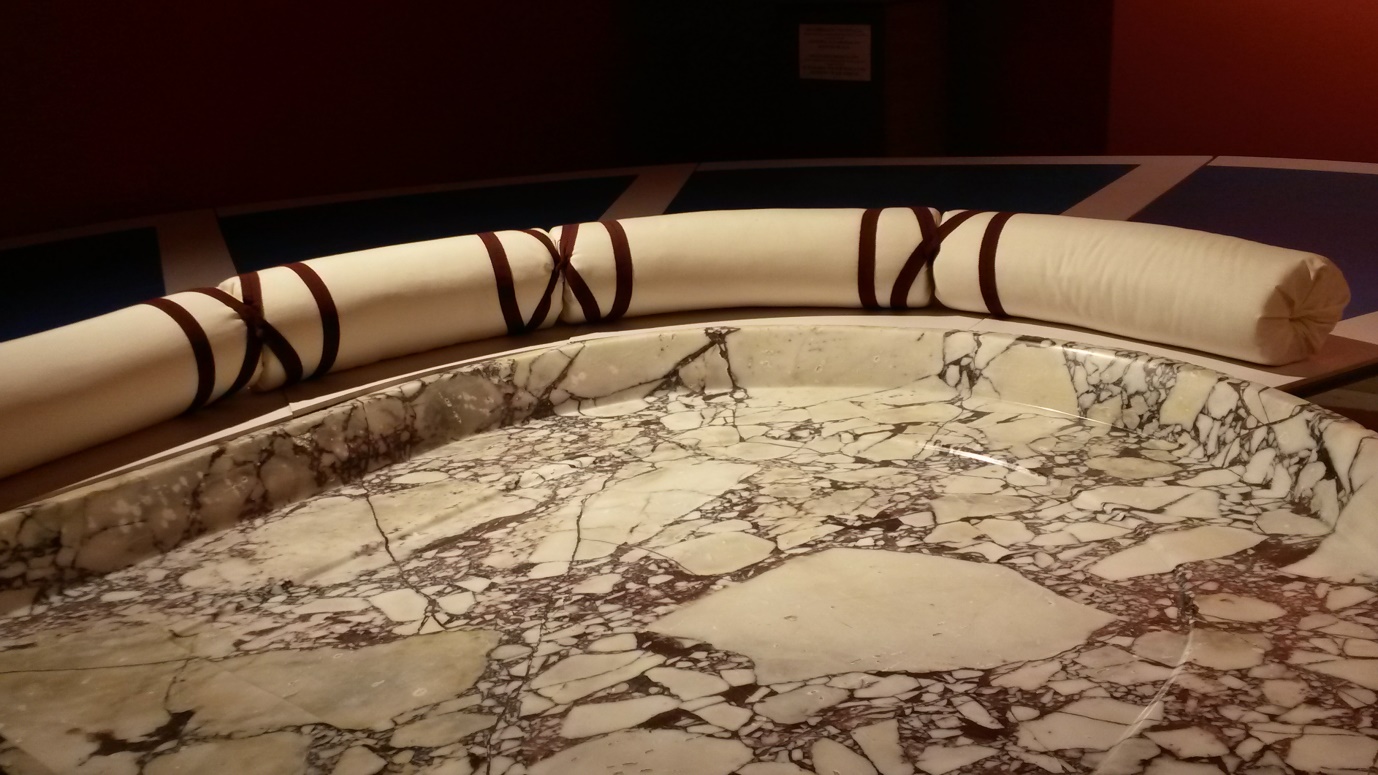5 Apr. Jesus talks about his betrayal
"After Jesus said this, he was very troubled. He said openly, 'I tell you the truth, one of you will turn against me.'"
"The followers all looked at each other, because they did not know whom Jesus was talking about. One of the followers [reclining] next to Jesus was [John] the follower Jesus loved. Simon Peter [sitting opposite John] made signs to him to ask Jesus whom he was talking about. That follower [John] leaned closer to Jesus and asked, 'Lord, who is it?'"
"Jesus answered, 'I will dip this bread into the dish. The man I give it to is the man who will turn against me.'"
"So Jesus took a piece of bread, dipped it, and gave it to Judas Iscariot, the son of Simon. As soon as Judas took the bread, [the] satan entered him. Jesus said to him, 'The thing that you will do - do it quickly.'"
"No one [reclining] at the [low] table understood why Jesus said this to Judas. Since he was the one who kept the money bag, some of the followers thought Jesus was telling him to buy what was needed for the feast or to give something to the poor."
"Judas took the bread Jesus gave him and immediately went out."
(John 13:21-30)

While Jesus's original words were spoken in Aramaic (an older version of modern-day Syriac), the New Testament was written in Greek, and we usually read it today in English or another language. Unfortunately, too often we gain the wrong impression of what Jesus did or said because we have lost or distorted the true meaning in the translation process.
We are used to reading in John 13:27 "As soon as Judas took the bread, Satan entered him." But the original Greek actually says "the satan" (with a 'the' and a little 's') "entered him." In Jewish minds in Jesus's day, "the satan" (literally "the accuser") wasn't seen as a personal devil; rather he was God's servant who, in the heavenly court on the Day of Judgement, would "accuse" a person of their wrongdoings - rather like the prosecutor in a court of law today. There was nothing 'evil' about him; he was just doing his job as "the accuser". (see Zechariah 3:1-2)
Similarly, having seen many Medieval and Renaissance paintings of the Last Supper, we picture Jesus sitting in the middle of a tall table, with his disciples in a straight line on either side of him. Unfortunately, this is also untrue, and the Greek New Testament makes no mention of a "table". In John 13:28. it simply refers to "the ones reclining".
In Jesus's day, diners eating a formal dinner such as a Passover supper followed the Roman pattern of reclining on a semi-circular couch (a 'stibadium') surrounding a low table (a 'triclinium'). As Jesus was probably dining in the guest room of a Roman citizen (in all likelihood John Mark's father), his followers would have been served at this low table by the family's servants. Jesus's twelve disciples would have reclined by resting on their left elbow and eating with their right hand.
Jesus told the disciples that one of them would betray him, and that he would die. He then performed a traditional Jewish custom used to welcome the most important guests at a feast. He dipped a piece of unleavened bread into the meat course and put this ‘sop’ into the mouth of Judas Iscariot.
The most honoured guests at a feast always sat to the right and left of the host. John’s gospel records that John himself was reclining to the right of Jesus (see John 13:23), so it's quite likely that Jesus asked Judas to sit beside him on his left, where he could dip his hand in the same bowl (see Matthew 26:23). Shortly after this, Judas left under cover of darkness to betray Jesus.
The photo shows a marble 'triclinium' - the low table around which Romans ate a meal while reclining on cushions on a semi-circular couch or 'stibadium'. The photo was taken in the Archaeological Museum at Split in Croatia.
You can read more about Jesus's 'Last Supper' @ https://www.thebiblejourney.org/…/6-jesuss…/the-last-supper/
